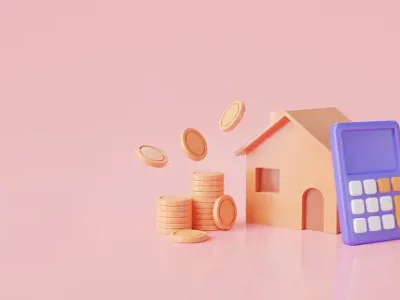Introduction to Mortgage Insurance
Well now, let’s pull up a chair and have a sit-down chat about mortgage insurance. Jumpin’ Jehoshaphat, it can be a fiddly business, but don’t go gettin’ your garters in a twist just yet. First and foremost, put simply, mortgage insurance, often known as PMI, Private Mortgage Insurance that is, is that little ol devil that crops up when you, the borrower, can’t muster up that larger down payment of at least 20% when buyin’ a house. It protects the lender, not you, paper or plastic, from that sinking feeling that the loan amount might not get paid back. Imagine it like a safety net for the lender, if things go belly-up. It’s factored into your monthly mortgage payment and the cost, the PMI cost, can shift based on various factors such as your credit score, loan term, and loan-to-value (LTV) ratio. Now, don’t be as flustered as a long-tailed cat in a room full of rockin’ chairs, there’s more to it.
Listen up, your mortgage lender may require you to pay PMI if ya put down less than 20%, which can be a big ol’ chunk of change, when trying to buy your home. It might seem as pesky as a mosquito at a nudist colony, but there’s a method in the madness. The PMI cost will fluctuate based on the size of your loan amount per year, the type of loan you have, I’m lookin at you conventional mortgage, and your debt-to-income ratio. The extra payments are usually added on top of your monthly mortgage payment, which we call adding insult to injury, and can leave you feelin’ like a frog in a slow boilin’ pot if you’re not keeping an eye on it. But hey, let’s look on the bright side, once you’ve paid enough of your loan balance and you’ve got some equity in your home, you can ask the lender to cancel the PMI. Now that’s what I call playin’ your cards right.
Calculate mortgage insurance with a PMI calculator to estimate your PMI and amortization schedule for your mortgage, it’ll give you the ammunition you need to make informed decisions about your home loan, and remember, knowledge is power folks.
Understanding PMI: Private Mortgage Insurance
Whoa, hold your horses! You’re planning on buying a house, huh? Well, let me drop some knowledge on you. Let’s tackle this beast called PMI, or Private Mortgage Insurance. Typically, if you’re preparing to plunk down less than 20% on your shiny new home, lenders will be chomping at the bit to rope you into buying PMI. Why, you ask? It’s an insurance policy that protects them, not you, if you default on your mortgage loan. As a homebuyer, you might feel like this is holding you over a barrel, making your monthly payments much heftier. You should know, a higher mortgage rate or an annual cost of your PMI can pinch your pocket over time.
However, don’t be crestfallen, because PMI is not a life sentence! You have a few tricks up your sleeve to avoid PMI or stop paying it. First and foremost, make sure to put your nose to the grindstone and save for at least a 20% down payment. Secondly, you can use a mortgage calculator to figure out how much jingle will be left in your pocket, post payment. Also, have a chinwag with various lenders to find the best mortgage rates. If you believe your home’s value has appreciated, ask your lender to cancel your PMI, and as long as you’ve got at least 20% equity in your humble abode. Meanwhile, beef up your credit score, to be eligible for better loan options.
However, if this feels like you’re trying to herd cats, just remember to refinance your mortgage. This has the potential to lower your interest rate or shorten your loan’s amortization, potentially saving you a pretty penny over the life of the loan. So, how much is PMI, anyway? Well, this varies according to your down payment and credit score, but generally, the monthly PMI is about 0.55% – 2.25% of the original loan amount. Knowing how PMI is calculated and its implications on your mortgage insurance rates can reduce the shockwave of those monthly debt payments.
Understanding how your payment changes over time, and making good use of the PMI calculator estimates can help you comprehend your real financial standing, giving you just the information you need. Like a wise old owl, always remember, every penny saved on PMI premium is a penny earned! With this knowledge under your belt, you, my friend, are ready to buy a home. Good luck, future homeowner!
Calculating PMI: Using a PMI Calculator for Monthly Mortgage Payments
Well, butter my buns and call me a biscuit, slip on your thinking cap because we’re about to dive into the world of PMI – Private Mortgage Insurance! If you plan to make a down payment on a house that’s less than 20% of the home price, brace yourself – there’s a good chance you’ll need to pay for PMI. Purchasing a house with a much smaller down payment might seem like a sweet piece of pie initially, but as it seems, you’re setting yourself up to pay a higher interest rate. This scenario turns the mortgage interest rate and the entire PMI concept into a bit of small-town gossip.
Here’s the skinny – you can use a PMI calculator to figure out how much private mortgage insurance you’re likely to cough up. It’s a must-have tool up your sleeve to help navigate these choppy waters. Using it is as easy as pie! Just enter your home price, loan amortization, mortgage interest rate, and bam! You’ll have a good grip on how much you’ll pay per month. PMI is calculated based on the principal and interest of the mortgage alongside the loan to value ratio. But mind you, if you’re saddled with low credit, you’ll pay more in interest over the life of the mortgage. Save you money? Don’t hold your breath! Even if you believe your home has much equity, unless you’ve put down at least 20%, you’ll be paying the mortgage insurance until you collar the Houdini act and stop paying PMI.
Conversely, your payments can increase or decrease if your lender requires insurance or if the insurance provider decides to raise the stakes. Roll up your sleeves and get ready because figuring out this PMI mess may feel like herding cats, but boy, it’ll be worth it!
Different Loan Types and Their Impact on PMI Rate
Ah, the world of loans! It’s a literal cornucopia of possibilities, isn’t it? All those types stretching out before us, each with their own intricacies and impacts on things like the PMI rate. You’re familiar with PMI, aren’t you? It’s your good old buddy, Private Mortgage Insurance – that pesky little hanger-on that strolls into the party uninvited when you “put down less than 20” on your home purchase. This unwelcome guest sticks around, munching on your hard-earned paycheck, until you’ve paid down at least 20 of your entire loan. And believe it or not, the type of loan you’ve bitten off can have a pretty big effect on this freeloader’s stay.
Let’s say you’re in the throes of using a “mortgage insurance calculator”, trying to suss out just how your PMI is calculated. Well, my friend, strap yourself in for a rollercoaster ride. Firstly, depending on your loan type, you might be required to pay an up-front premium, typically split out by your mortgage insurer. Basically, they’re asking you to pay upfront for their future insurance obligations. It’s a bit like when you help your buddy move, and he promises to return the favor before you’ve even unpacked the first box.
Some of the options include:
- Federal Housing Administration Loans: These often require both an upfront and an annual renewal premium, which varies based on the loan-to-value ratio and loan term.
- VA Loans: Insured by the government, these typically come with a one-time funding fee, but no ongoing PMI.
- USDA Loans: Backed by the United States Department of Agriculture, you’ll usually find an upfront guarantee fee and an annual fee.
- Conventional Loans: These use the PMI rate dictated by the insurer, determined by the down payment amount and credit score.
So you see, not all loans are created equal, and their impact on your PMI is as varied as the hues of a sunset.
How to Pay PMI: Inclusion in the Monthly Mortgage Payment
Ah, the wonderful world of homeownership! Down to brass tacks, shall we? PMI, or Private Mortgage Insurance, is a necessary evil for many homeowners who don’t have that magic 20% down payment when they buy a home. Many folks ask – how’s the PMI calculated? Well, it normally ranges from 0.5% to 1% of the full loan amount per year. This cost is then split into 12 for a monthly installment. This might feel like a real kick in the pants, but hey, it’s the cost of the ticket to homeownership.
Now, here’s the meat and potatoes – how to pay! Unlike your grandma’s apple pie recipe, this isn’t handed down through generations but rather tacked on to your monthly mortgage payment. Yup, you heard it right! It’s all wrapped up in that monthly bill from your lender like a not-so-pleasant surprise in a box of chocolates. However, it isn’t just lumped in there without rhyme or reason.
The various costs in your monthly mortgage payment can include:
- Principal payment: Your loan’s main body, the real McCoy.
- Interest: The lender’s fee, if you like, for borrowing their dough.
- Escrow: Cash set aside for property taxes and homeowner’s insurance.
- And last but not least, our unpopular pal – PMI.
So, there you have it; it’s no longer Greek to you, right? When you cut the first check to your lender each month, remember that PMI is included. Even though it’s a bitter pill to swallow, remember, you’re steadily chipping away at that loan principal. The more you chip away, the closer you’ll get to eliminating PMI once and for all. Just keep your nose to the grindstone, and you’ll see light at the end of the tunnel soon enough.
Strategies to Get Rid of PMI: When and How to Cancel PMI
Ah-ah-ah, let’s not get ahead of ourselves! We need to address the elephant in the room: PMI or Private Mortgage Insurance. You see, PMI is like that clingy friend who overstays their welcome. Alas, fear not! There are ways to shake off this pesky burden and reclaim your financial freedom. It all boils down to when and how; when conditions are ripe and how you play your cards right. Oh, and have you been scratching your head over how PMI is calculated? Well, we’ll get into that too.
For starters, understanding when to bid your PMI adieu is half the battle. Typically, you can request your lender to cancel PMI when your mortgage balance falls to 80% of the original value of your home. But wait, there’s even more good news! Legally speaking, your lender must terminate PMI when your balance hits 78%. Now, onto the nitty-gritty of how to rid yourself of PMI.
Here’s the lowdown:
- You could speed up your payments, effectively reducing your balance faster. Easier said than done, of course. If your pockets allow it, this is a fantastic strategy.
- Another way is to prove that your home’s value has increased. This often happens when the real estate market is on the upswing or if you’ve made some nifty improvements to your home.
- Last but not least, you could consider refinancing. This brings into play several factors like lower interest rates and improved credit scores.
So, you see, PMI cancellation isn’t as daunting as it seems. With some grit, astute strategies, and a keen understanding of how PMI is calculated, you can master the art of eliminating PMI. Cheers to that, eh?
Conclusion
In conclusion, it is noteworthy to consider the importance and the process through which the PMI is calculated. The Project Management Institute Index, widely known as the PMI plays a pivotal role in project management, offering key insights that aid organizational decision-making. The PMI is calculated by combining various factors that reflect the status of projects such as the scope, time, and costs involved. The significant point to note is that the PMI calculation goes beyond just mere math, it also contemplates the qualitative perspective of projects. This sophisticated blend of quantitative and qualitative elements in the PMI calculation provides an exhaustive representation of a project’s condition at a given point of time. This enables project managers to understand how well they are doing or where improvements are needed. Hence, the PMI calculated appropriately serves as an invaluable tool for effective project management and success.
FAQ’s:
1. How is PMI calculated?
Answer: PMI is calculated by taking the loan amount, multiplying it by the PMI rate, and dividing it by 12.
2. What factors affect the cost of mortgage insurance?
Answer: The cost of mortgage insurance is affected by the loan amount, the loan-to-value ratio, the type of loan, and the credit score of the borrower.
3. How much does PMI cost?
Answer: The cost of PMI varies depending on the loan amount, the loan-to-value ratio, the type of loan, and the credit score of the borrower.
4. What is the difference between PMI and mortgage insurance?
Answer: PMI stands for Private Mortgage Insurance and is typically required when a borrower has a loan-to-value ratio of more than 80%. Mortgage insurance is typically required when a borrower has a loan-to-value ratio of less than 80%.
5. How can I avoid paying PMI?
Answer: One way to avoid paying PMI is to make a down payment of at least 20% of the purchase price of the home.
6. How long do I have to pay PMI?
Answer: The length of time you have to pay PMI depends on the type of loan and the loan-to-value ratio. Generally, PMI is required until the loan-to-value ratio reaches 78%.
7. Is PMI tax deductible?
Answer: PMI is not tax deductible, but some of the costs associated with PMI may be tax deductible.

Nina Jerkovic
Nina with years of experience under her belt, excels in tailoring coverage solutions for both individuals and businesses. With a keen eye for detail and a deep understanding of the insurance landscape, Nina is passionate about ensuring her clients are well-protected. On this site, she offers her seasoned perspectives and insights to help readers navigate the often intricate world of insurance.



